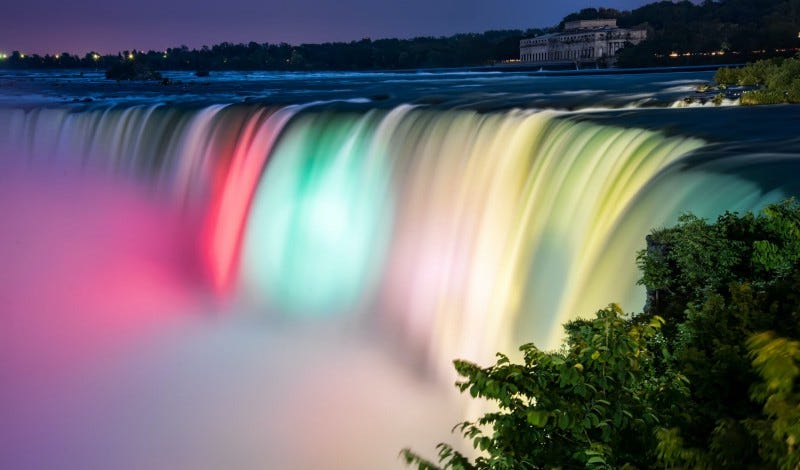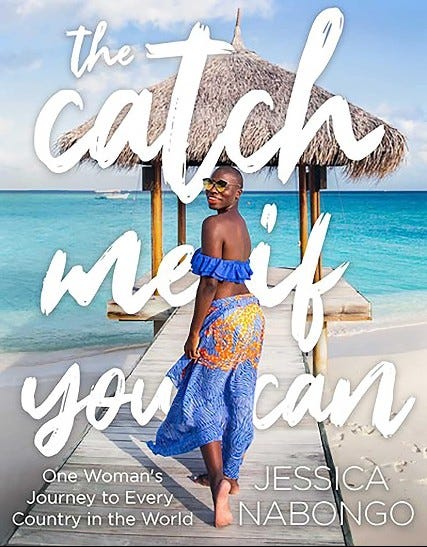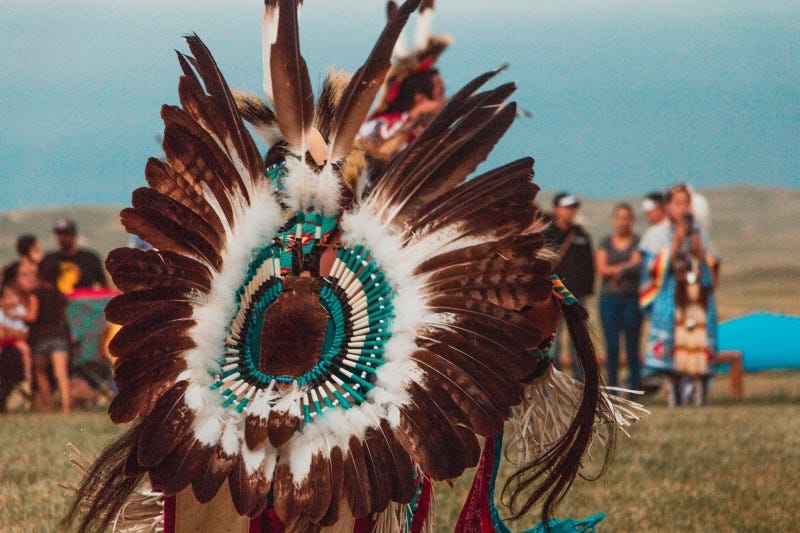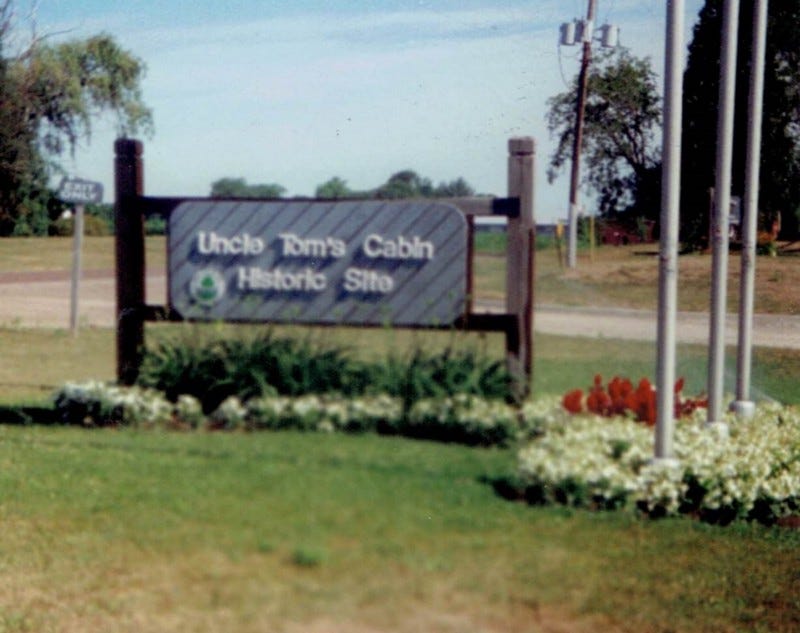For the culture: How travel can be the best history lesson
Uncle Tom’s Cabin, Native American history, other lessons learned in Canada

Editor’s Note: This blog has been updated and the original version was published on Our Ancestories, the blog site for author Ekiuwa Aire, who has written “Njinga of Ndongo and Matamba” and “Idia of the Benin Kingdom: Workbook.”
There’s a switch that goes off in a child’s head when she hears an unpopular opinion or has a new cultural experience. She’s not quite sure what to make of it after normalizing certain behavior. Is that culture right? Is that opinion wrong? Why didn’t anyone tell her sooner? Should she correct others now?
That happened to me twice while I was traveling to Canada at the age of 17. It was a high school graduation gift from my mother, who’d talked me into being her travel buddy for my former Girl Scout troop.
Recommended Read: “Black girls and Girl Scouts: It’s more than selling cookies ~ From girl’s guy to Girl Scout”
Although I’d long ago left Girl Scouts, she still remained a Girl Scout leader. I was leaving for an out-of-state college less than a few months later and figured this would be a fun trip to go on before I moved out. I wasn’t quite ready for all the lessons I’d learn that would be a prelude to college.
Reevaluating Uncle Tom’s Cabin
The first time was while I walked around Ontario, viewing Uncle Tom’s Cabin Historic Site. While the tour guide led us around, she talked about how misguided it was to link the name “Uncle Tom” to the phrase “sellout.” If you’ve read the book written by abolitionist Harriet Beecher Stowe, then you may already know Uncle Tom was beaten for refusing to give up the whereabouts of two black women who were sexually violated by their master.
But according to folklorist Patricia Turner (via NPR), “the early stage shows didn’t think that they could attract an audience for Uncle Tom as he was depicted by Stowe.” For those who hadn’t read the book and only seen plays, Uncle Tom was depicted as someone older, less educated, and more like what we now know as Uncle Ruckus from “The Boondocks” or Stephen from “Django Unchained.”
ADVERTISEMENT ~ Amazon
As an Amazon affiliate, I earn a percentage from purchases with my referral links. I know some consumers are choosing to boycott Amazon for its DEI removal. However, after thinking about this thoroughly, I want to continue promoting cool products from small businesses, women-owned businesses and (specifically) Black-owned businesses who still feature their items on Amazon. As of the first date of Black History Month 2025, each new post will ALWAYS include a MINIMUM of one product sold by a Black-owned business. (I have visited the seller’s official site to verify that Amazon Black-owned logo.) I am (slowly) doing this with older, popular posts too. If you still choose to boycott, I 100% respect that decision.

I hadn’t read the book. I’d just assumed the “Uncle Tom” description was the latter two. It was peculiar that I never bothered to question the slur-ish name, considering I was a kid who challenged everyone on everything. But what would make me think that someone would change an entire book character’s personality to sell more tickets? I’d heard this phrase off and on during my studies in African-American history and literature, and even in casual conversations with my peers, and not one person bothered to challenge the name versus the book.
When a Native American costume backfires
While still reeling from what I’d learned about the Stowe novel, our next stop was to the Seneca Indian Reservation on the New York side of Niagara Falls. I looked into the eyes of a bunch of girls waiting for us. They were all indigenous young ladies of varying ages.
Our group of camera-happy travelers were asked not to take photographs while we were there. We were told that taking photographs could “steal a person’s soul.” This was culture shock for someone who had been taking pictures of everything that moved since I was in sixth grade.
After meeting Girl Scouts, we were invited back for a pow wow, where we learned about the stories behind various costumes and feathers; checked out handmade dolls; listened to a variety of songs and instrumentals; and watched choreography to go with it. Because of the lack of camera footage, my memories are foggy but being present made me pay more attention while I was there instead of being my usual camera-clicking self.
The one memory that’s not foggy to me is eyeing the moccasins, headgear and outfits. While our guide explained what everything meant, I kept thinking of a much cheaper and way off base Halloween outfit I’d worn in years prior. I had a feather stuck in my hair, a headband, and some random shoes and a lightweight coat that was supposed to be an “Indian costume.”
Recommended Read: “From childhood to adulthood: Simplest way to stop cultural appropriation ~ When imitation is more offensive than flattering”
In comparison to what I was looking at on this reservation, not only was my costume inaccurate but I wondered why in the world I wore it to begin with. This was many years before I knew what cultural appropriation was nor did I mean any harm by it, but I certainly regretted my Halloween decision. I also wondered why no adults asked me to choose something else. But judging from how attentively other Girl Scout leaders, including my mother, were listening, none of us really knew.

Why cultural exploration is so important to youth
By the time I got to college months later and ended up going to a second pow wow, I already knew what to expect. Even now, I could find Waldo in every activity book there is before I’d see a native family (or individual) in Chicago. In Marquette, Michigan though, it was fairly common. I sat down with a few native students and compared notes from what I’d learned from that tribe in New York to their own experiences.
Of my African-American peers, I became the loudest by far regarding changing sports team names and mascots. Before then, my Chicago Blackhawks jersey was one of my go-to tops when I wasn’t wearing FUBU, Nautica, BOSS or Karl Kani. As with my Halloween costume, ignorance can too easily make someone not know they’re being offensive until new information and education is presented to them. I didn’t even like hockey, but I thought my jersey was dope!
I never expected that trip to Canada to be such a memorable, informative vacation that permanently shaped my views when it came to literacy (always read the book first, watch the movie or the play second) and culture (don’t trust Mainstream America to depict BIPOC cultural references).
Many times, students like myself depend on a desk and a chalkboard to tell them what’s what. But sometimes getting out and talking to people unlike themselves is the best lesson to learn.
Did you enjoy this post? You’re also welcome to check out my Substack columns “Black Girl In a Doggone World,” “BlackTechLogy,” “Homegrown Tales,” “I Do See Color,” “One Black Woman’s Vote” and “Window Shopping” too. Subscribe to this newsletter for the weekly posts every Wednesday. Thanks for reading!





